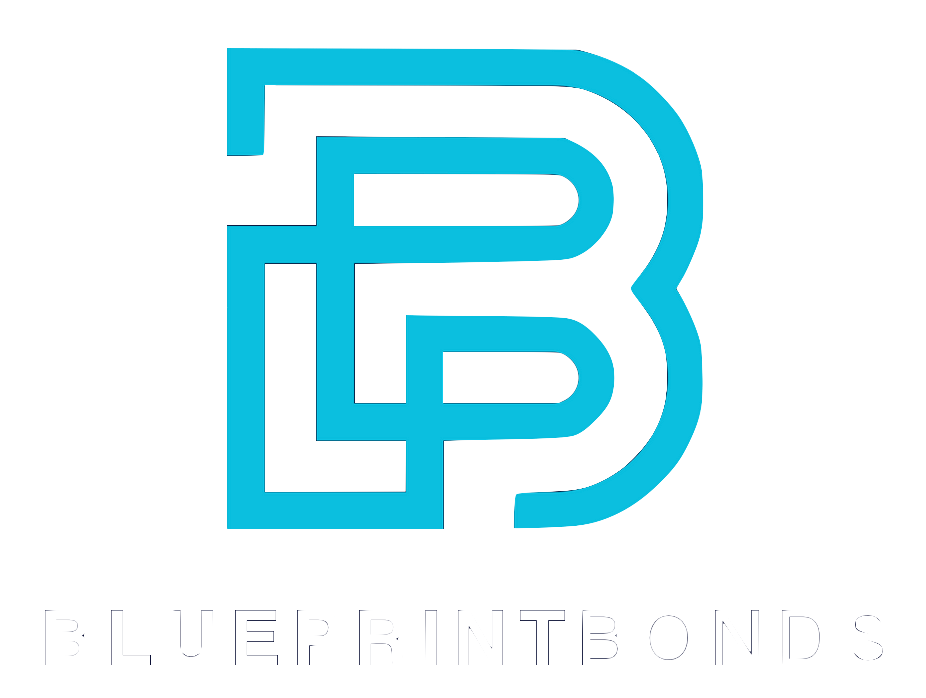In the realm of employee benefits and retirement plans, the Employee Retirement Income Security Act (ERISA) plays a pivotal role in safeguarding the interests of employees. One of the essential components of ERISA compliance is the requirement for certain fiduciaries to obtain an ERISA bond. This article delves into the specifics of the Arizona ERISA bond, exploring its purpose, requirements, and implications for employers and plan administrators.
Understanding ERISA and Its Importance
The Employee Retirement Income Security Act, enacted in 1974, was designed to protect the retirement assets of American workers. It sets minimum standards for pension plans in private industry, ensuring that plan fiduciaries act in the best interests of participants and beneficiaries. ERISA also establishes guidelines for reporting and disclosure, ensuring transparency in how retirement plans operate.
One of the critical aspects of ERISA is the fiduciary responsibility it imposes on those who manage employee benefit plans. Fiduciaries are required to act prudently and solely in the interest of plan participants. To mitigate the risk of mismanagement or fraud, ERISA mandates that certain fiduciaries obtain a fidelity bond, commonly referred to as an ERISA bond.
In addition to protecting participants, ERISA also plays a significant role in enhancing the overall security of retirement plans. The act requires that plans provide participants with essential information about their benefits, including plan features, funding status, and the rights of participants. This transparency is crucial, as it empowers employees to make informed decisions regarding their retirement savings. Furthermore, ERISA's provisions extend to various types of employee benefits, including health insurance and disability benefits, thereby ensuring a comprehensive safety net for workers.
Moreover, ERISA has evolved over the years to adapt to changing workforce dynamics and economic conditions. For instance, the introduction of 401(k) plans and other defined contribution plans has transformed how employees save for retirement. These plans, while offering greater flexibility and control to participants, also come with their own set of challenges and responsibilities. ERISA's regulatory framework helps to navigate these complexities, ensuring that employees can confidently invest in their futures while adhering to sound financial practices.

What is an ERISA Bond?
An ERISA bond is a type of fidelity bond that protects employee benefit plans from losses caused by acts of fraud or dishonesty by individuals who handle plan funds. This includes plan administrators, trustees, and other fiduciaries. The bond serves as a form of insurance, ensuring that funds are available to compensate the plan in case of theft or misappropriation. The importance of this bond cannot be overstated, as it acts as a safeguard for the financial integrity of the employee benefit plans, which are often critical to the well-being of employees and their families.
In Arizona, as in other states, the requirement for an ERISA bond is not just a good practice; it is a legal obligation for certain fiduciaries. The bond must be obtained from a surety company that is authorized to conduct business in the state. Failure to secure an appropriate bond can lead to significant legal repercussions, including penalties for non-compliance and potential liability for fiduciaries. This underscores the necessity for fiduciaries to remain vigilant and proactive in their responsibilities.
Who Needs an ERISA Bond?
Not every employee benefit plan is required to have an ERISA bond. The requirement typically applies to fiduciaries who handle plan funds or property. This includes:
- Plan administrators who manage the day-to-day operations of the plan.
- Trustees responsible for holding and managing plan assets.
- Anyone who has authority to disburse funds from the plan.
However, if a plan has fewer than 100 participants and is not subject to certain risks, the bond requirement may not apply. It's essential for plan sponsors to understand their specific obligations under ERISA to ensure compliance. Additionally, even if a bond is not legally required, many organizations choose to obtain one as a best practice to protect themselves and their employees from potential financial losses. This proactive approach can foster trust and confidence among plan participants, reinforcing the integrity of the plan's management.
The Bond Amount
The amount of the ERISA bond required is determined by the total amount of funds handled by the fiduciary. Generally, the bond must be equal to at least 10% of the plan assets, with a minimum requirement of $1,000 and a maximum of $500,000. For plans that hold employer securities, the maximum bond amount required is $1,000,000.
This tiered structure ensures that the bond amount is proportional to the risk associated with the fiduciary's handling of plan assets, providing adequate protection for participants and beneficiaries. It's also worth noting that the bond amount can be influenced by various factors, including the size and complexity of the plan, the nature of the investments held, and the fiduciary's history of compliance. By carefully assessing these elements, fiduciaries can determine the appropriate bond amount that aligns with their specific circumstances, thereby enhancing the overall security of the employee benefit plan.
How to Obtain an ERISA Bond in Arizona
Obtaining an ERISA bond in Arizona involves several steps, and understanding the process can help ensure compliance and protect the interests of plan participants.
Step 1: Assess the Need for a Bond
The first step is to determine whether the plan requires an ERISA bond. This involves evaluating the roles of individuals who handle plan funds and understanding the specific requirements based on the number of participants and the nature of the plan. Consulting with a benefits attorney or a compliance expert can provide valuable insights. It's important to note that the bond is designed to protect the plan from losses caused by fraud or dishonesty, which underscores the necessity of this assessment. Additionally, plans with a higher number of participants or those that manage substantial assets may have stricter bonding requirements, making it essential to conduct a thorough evaluation.
Step 2: Choose a Surety Company
Once the need for a bond is established, the next step is to select a surety company that is licensed to operate in Arizona. It is crucial to choose a reputable company with experience in providing ERISA bonds. Many insurance agents and brokers specialize in this area and can assist in finding the right provider. When selecting a surety company, it’s advisable to consider factors such as the company’s financial stability, customer reviews, and the range of services they offer. Engaging with multiple surety companies can also provide a clearer understanding of the market rates and terms, allowing for a more informed decision.
Step 3: Complete the Application Process
The application process typically involves submitting information about the plan, the fiduciaries, and the amount of bond required. The surety company will evaluate the application and may require additional documentation or background checks on the fiduciaries. Once approved, the bond will be issued, and the fiduciaries must ensure that it remains in force throughout their tenure. It's also important to keep in mind that the bond amount must be at least 10% of the plan's assets, up to a maximum of $500,000 for plans that hold employer securities. This requirement ensures that the bond provides adequate coverage for potential losses, reinforcing the importance of maintaining accurate records and timely renewals to avoid lapses in coverage.
Cost of an ERISA Bond
The cost of an ERISA bond can vary based on several factors, including the amount of coverage required, the risk profile of the fiduciaries, and the surety company's underwriting criteria. Generally, the premium for an ERISA bond ranges from 1% to 15% of the bond amount annually.
For example, if a plan requires a bond of $100,000, the annual premium could range from $1,000 to $15,000, depending on the specific circumstances. It is advisable for plan sponsors to shop around and compare quotes from different surety companies to find the best rate.
Additionally, the cost can be influenced by the financial stability and history of the plan sponsor. Companies with a strong financial background and a good track record of fiduciary responsibility may qualify for lower premiums, as they are viewed as lower risk by surety companies. Conversely, organizations that have faced legal issues or have a history of mismanagement may encounter higher rates, reflecting the increased risk associated with insuring them.
Moreover, the type of plan being covered can also play a significant role in determining the bond's cost. For instance, larger plans with more complex structures or those that involve significant employee contributions may necessitate higher coverage amounts, thus impacting the overall premium. It is also important to consider the specific terms of the bond, as certain conditions or exclusions could affect the pricing and the level of protection provided, making it essential for plan sponsors to fully understand the details before committing to a policy.

Compliance and Reporting Requirements
Maintaining compliance with ERISA regulations involves more than just obtaining an ERISA bond. Plan sponsors and fiduciaries must also adhere to various reporting and disclosure requirements to ensure transparency and accountability. These obligations are designed to protect the interests of plan participants and beneficiaries, fostering trust in the management of their retirement assets.
Annual Reporting
ERISA mandates that plan sponsors file an annual Form 5500, which provides detailed information about the plan's financial condition, investments, and operations. This form must be filed with the Department of Labor (DOL) and is essential for maintaining compliance. Failure to file can result in penalties and increased scrutiny from regulatory agencies. The Form 5500 serves not only as a compliance tool but also as a means of informing participants about the plan's performance and financial health, thus promoting greater engagement and understanding of their retirement savings.
Moreover, the information reported in the Form 5500 can be instrumental in identifying trends within the plan, such as changes in investment performance or shifts in participant demographics. This data can help plan sponsors make informed decisions regarding plan design and investment strategies, ultimately benefiting the participants. Additionally, the DOL provides resources and guidance to assist plan sponsors in accurately completing this form, highlighting the importance of thorough preparation and attention to detail.
Bond Renewal
ERISA bonds are typically issued for a specific term, often one year. Fiduciaries must ensure that the bond is renewed before its expiration to maintain compliance. This involves reassessing the bond amount based on any changes in plan assets and ensuring that the surety company remains reputable and authorized. The renewal process is not merely a formality; it requires careful consideration of the plan's evolving risk profile and the financial landscape in which it operates.
In addition to the annual renewal, fiduciaries should also review the terms of the bond to ensure they align with the current needs of the plan. This may include evaluating the coverage limits and any potential exclusions that could leave the plan vulnerable. Engaging with a knowledgeable insurance broker can provide fiduciaries with insights into the best practices for securing adequate bond coverage, ensuring that they remain compliant while safeguarding the interests of plan participants. Regular communication with the surety company can also help fiduciaries stay informed about any changes in underwriting criteria or market conditions that could affect their bond coverage.
Consequences of Non-Compliance
Failing to obtain or maintain an ERISA bond can have serious consequences for plan sponsors and fiduciaries. The Department of Labor takes ERISA compliance seriously, and violations can lead to significant penalties, including fines and potential legal action.
Moreover, the lack of an ERISA bond exposes the plan to increased risk of loss due to fraud or dishonesty. Without this protection, participants and beneficiaries may face financial hardships if funds are misappropriated. Therefore, it is crucial for plan sponsors to prioritize compliance and ensure that all fiduciaries are bonded as required.
In addition to financial penalties, non-compliance can severely damage the reputation of the organization involved. Stakeholders, including employees and investors, may lose trust in a company that fails to protect its retirement plans adequately. This erosion of trust can lead to decreased employee morale, higher turnover rates, and challenges in attracting new talent. Furthermore, the organization may find itself facing scrutiny from regulatory bodies, which can lead to more extensive investigations and audits, compounding the initial issues caused by non-compliance.
Furthermore, the implications of non-compliance extend beyond immediate financial repercussions. If a plan sponsor is found to be non-compliant, they may also face increased scrutiny in future dealings with financial institutions and insurance providers. This could result in higher premiums or more stringent requirements when seeking insurance coverage for fiduciary liability. Ultimately, the long-term costs associated with non-compliance can far outweigh the initial investment in securing an ERISA bond, making it a prudent decision for any organization managing employee benefit plans.
Best Practices for Managing ERISA Bonds
To effectively manage ERISA bonds and ensure compliance, plan sponsors should adopt several best practices. These practices can help mitigate risks and protect the interests of plan participants.
Regular Reviews
Conducting regular reviews of the ERISA bond and the fiduciaries' roles is essential. This includes assessing the bond amount to ensure it remains adequate as the plan grows and evolves. Regular reviews can help identify any changes in the fiduciary landscape that may necessitate adjustments to the bond.
Education and Training
Providing education and training for fiduciaries on their responsibilities under ERISA is crucial. This includes understanding the importance of the bond, the implications of fiduciary duties, and the potential risks associated with mismanagement. Well-informed fiduciaries are better equipped to act in the best interests of plan participants.
Consulting Professionals
Engaging with legal and compliance professionals who specialize in ERISA can provide valuable guidance. These experts can help navigate the complexities of ERISA regulations, assist in obtaining the appropriate bond, and ensure that all compliance requirements are met. Their expertise can be invaluable in mitigating risks and avoiding costly mistakes.
Conclusion
The Arizona ERISA bond is a critical component of compliance for employee benefit plans. Understanding its requirements, obtaining the appropriate coverage, and maintaining compliance are essential for protecting the interests of plan participants. By prioritizing ERISA bond management and adhering to best practices, plan sponsors can ensure that they fulfill their fiduciary responsibilities and safeguard the financial well-being of their employees.
As the landscape of employee benefits continues to evolve, staying informed about ERISA regulations and bonding requirements will be vital for all fiduciaries. By doing so, they can help foster trust and confidence among participants, ensuring that retirement plans serve their intended purpose of providing financial security for the future.
Article By: Ryan Spalding
Licensed Insurance Agent & Bond Specialist
Contact Us

